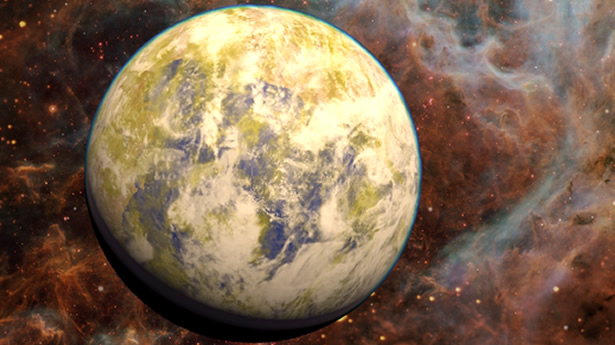
A team of astronomers headed by R.A. Wittenmyer of the University of New South Wales have discovered what could be a “super-Earth” in the habitable zone of a red-dwarf star.
Wittenmyer and his colleagues discovered the planet in orbit around Gliese 832 (GJ 832), which is located approximately 16.1 light years away. In their paper, which will be published in The Astrophysical Journal, they argue that “the GJ 832 system can be considered a miniature Solar system analog, with an interior potentially rocky planet, and a distant gas giant.”
That “interior potentially rock planet” is Gliese 832c (GJ 832c), and it “is sufficiently far from its host star that there is the potential for liquid water to exist on its surface.”
However, the astronomers note that the planet’s large mass makes it “likely to be shrouded in a dense atmosphere,” which would “provide a strong greenhouse effect, raising the surface temperature enough to cause any oceans to boil away, as is thought to have happened to Venus early in the lifetime of the Solar system.”
“Given the large mass of the planet, it seems likely that it would possess a massive atmosphere, which may well render the planet inhospitable,” Wittenmyer and colleagues wrote. “It is perhaps more likely that GJ 832c is a ‘super-Venus,’ featuring significant greenhouse forcing.”
Still, GJ 832c has an Earth Similarity Index (ESI) of 0.81, making it comparable to to Gliese 667c (9.84) and Kepler-62e (0.83) — meaning it is one of the three most Earth-like planets yet discovered.
That it exists in a Solar system analogous to the Earth’s makes it a prime candidate for future study.
source: Rawstory
Tags: discover earth like planet, Science, Scientists, Solar System
Leave a Reply
You must be logged in to post a comment.